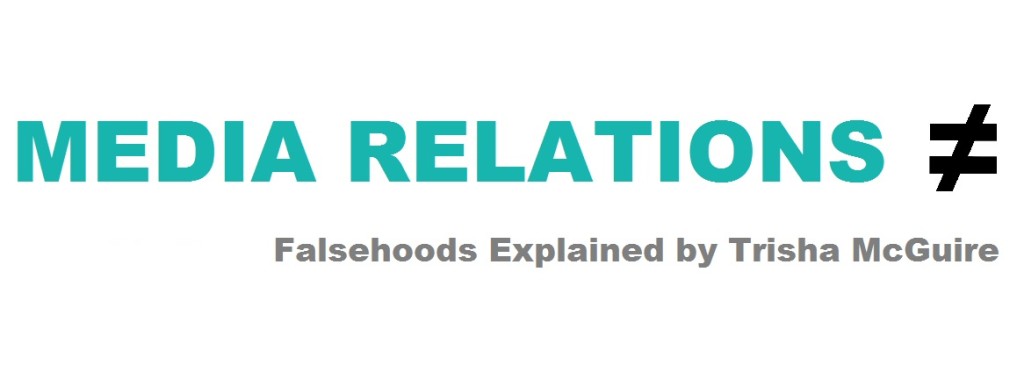 To many, media relations is as perplexing as complex algorithms. Some are so skeptical, they view practitioners as snake oil salespeople. To demystify the practice, let’s walk through some common misperceptions. To first ground us, let’s start with a definition. Per Wikipedia, “Media relations involves working with media for the purpose of informing the public of an organization’s mission, policies and practices in a positive, consistent and credible manner.” Now on to what media relations does not equal …
To many, media relations is as perplexing as complex algorithms. Some are so skeptical, they view practitioners as snake oil salespeople. To demystify the practice, let’s walk through some common misperceptions. To first ground us, let’s start with a definition. Per Wikipedia, “Media relations involves working with media for the purpose of informing the public of an organization’s mission, policies and practices in a positive, consistent and credible manner.” Now on to what media relations does not equal …
Media Relations ≠Public Relations
The Public Relations Society of America describes public relations as “… a strategic communication process that builds mutually beneficial relationships between organizations and their publics.” Public relations is comprised of several areas, such as the following: community relations, employee relations, event promotion, investor relations and public affairs. Content creation, sponsorships and speaking engagements can also fall in the realm of public relations. The bottom line: public relations is not just media relations. It’s much more.
Media Relations ≠ Advertising
By pitching a story idea to the media, practitioners are able to secure earned media. The earned media could be a print or online article, TV or radio interview/segment or a blog post. This earned media is not an advertisement. An advertisement is paid for by the company or brand and guaranteed. The beauty of media relations is the third party credibility conveyed to your company. Ask yourself: do you put more stock in flashy advertisements or an article you read from a credible news source? However, coverage secured via media relations is not guaranteed as it is at the discretion of the reporter and/or editor regarding if, when and how the news is covered.
Media Relations ≠Free
This is where folks get confused. Per my section above, earned media isn’t paid media. In fact, don’t ever offer journalists money. But, the myriad tactics required to secure earned media aren’t free. Sound media relations requires strategic thinking, creative ideas, outreach and follow-up – all of this takes time. Lots of time. And time in media relations is how practitioners earn a living. Also, there are many tactics such as media tours, mailings, spokesperson out-of-pocket costs, media events, etc. that may be costly. In short, you don’t pay for the placement itself but the work that goes into securing the placement. With the exorbitant cost of advertising, you almost always come out ahead with media relations (and the credibility factor is honestly priceless).
Media Relations ≠ Press Release
A press release is one vehicle to inform the media of company news (e.g., a new product, an event, an opening, etc.). However, a well-crafted media relations strategy should include a pitch angle to accompany the press release that gives the journalist you are pitching context and/or the “so what” to the news and/or information that places your company’s news within a larger story. Some of my best media placements have been secured without a press release at all, but rather a crafty [email] pitch letter. Side note: Creating a press release when there isn’t news or simply posting a press release on a wire site (unless you’re just doing it for web reasons) will not earn your company quality news placements.
Now that you understand the “equation” of media relations (media relations = awareness and credibility for your brand or company), I hope you reach out to the team here at Pivot PR when you need some strategic media relations support!